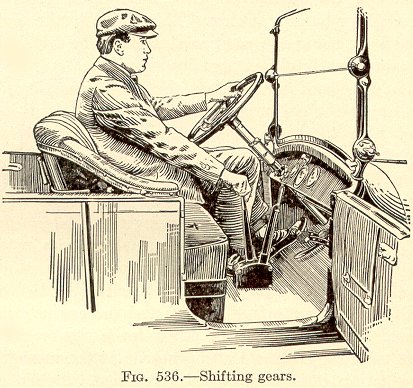Grandpa's Automobile
Today, grandpa's first automobile. The University of Houston's College of Engineering presents this series about the machines that make our civilization run, and the people whose ingenuity created them.
The U.S. government first listed statistical data on automobiles in 1914. They showed 1.7 million licensed cars. And, how much all these new owners needed to know about the care and feeding of cars!
A year later, McGraw-Hill published The Gasoline Automobile — a book on how to cope with these new machines. The first edition quickly raced through fourteen printings.
Now it's 1920, and the second edition is in its tenth printing. Over nine million Americans own cars, and very few support services are in place. Your grandpa, who's just bought his first car, is on his own, so he buys this book.
The book doesn't favor any carmaker. It gives equal time to Packards, Fords, Buicks and Cadillacs. However, it takes only four pages to dismiss the remaining steam and electric competitors of gasoline automobiles. By now, gasoline rules the road.
Much of what follows might've appeared in my college internal-combustion-engines textbook — wonderful detailed drawings of engines, chassis, gages, and ignition systems. The completeness is astonishing. You could build your own automobile from the information here. The book includes performance data, graphs, schematic diagrams, and equations.
It also offers wonderful perspectives. For example: if grandpa didn't have a proper twelve-volt car battery, he could buy six big dry cells at the hardware store and wire them in series (the same big batteries he used to power his telephone.) By the way, you and I could also do that in a pinch — if we thought of it.
The section on gear shifting describes two systems: One is Ford's Model-T planetary gear system. You have to use both foot pedals and a dashboard lever. It's robust, but complicated. By 1920, most of Ford's competitors had gone to a stick shift — three speeds forward and one reverse. It'd be another seven years before Ford finally put a stick shift on his new Model A.
You learn how to open the engine and scrape accumulated sludge off the tops of pistons. Back then, flooding was a major problem. If the ignition wasn't firing, each time you cranked the engine more gas condensed in the cylinder. You soon had a puddle, and not enough air to burn it. The easiest way to fix that was to leave it alone for an hour or two. The puddle would evaporate.
Finally, grandpa learns to drive his new car. And we read this wonderful warning:
Drivers have begun to realize the accuracy with which a car may be steered. ... For this reason, it seems natural for some drivers to display their nerve in not turning from the center of the road until they are almost upon the approaching vehicle.
If the other driver is as courageous as you are, we're told, that can be dangerous. So, not only did grandpa have to learn to change flats and clean spark plugs. Before the automobile came of age, your young grandpa also had to learn not to play chicken.
I'm John Lienhard, at the University of Houston, where we're interested in the way inventive minds work.
(Antique automobile sound effect)
G. W. Hobbs, B. G. Elliott, and E. L. Consoliver, The Gasoline Automobile. 2nd ed., New York: McGraw-Hill Book Co., Inc. 1920
For an array of images from the book, Click Here.

Grandpa at the wheel, 1920